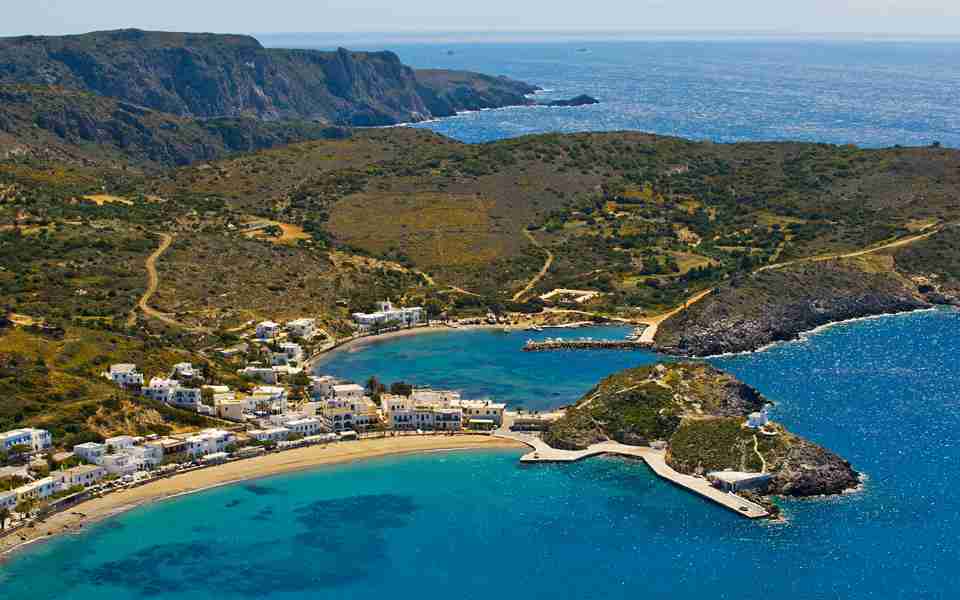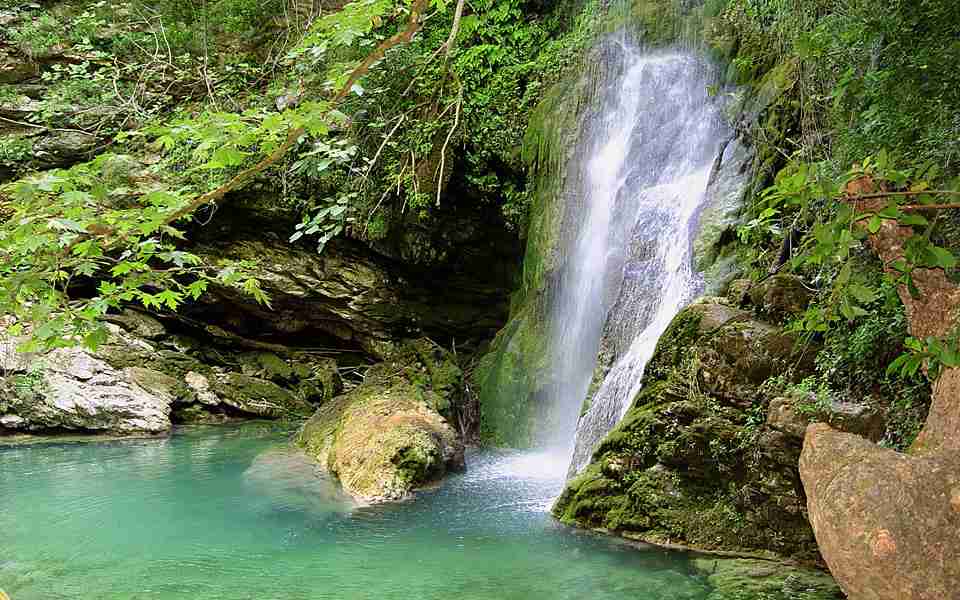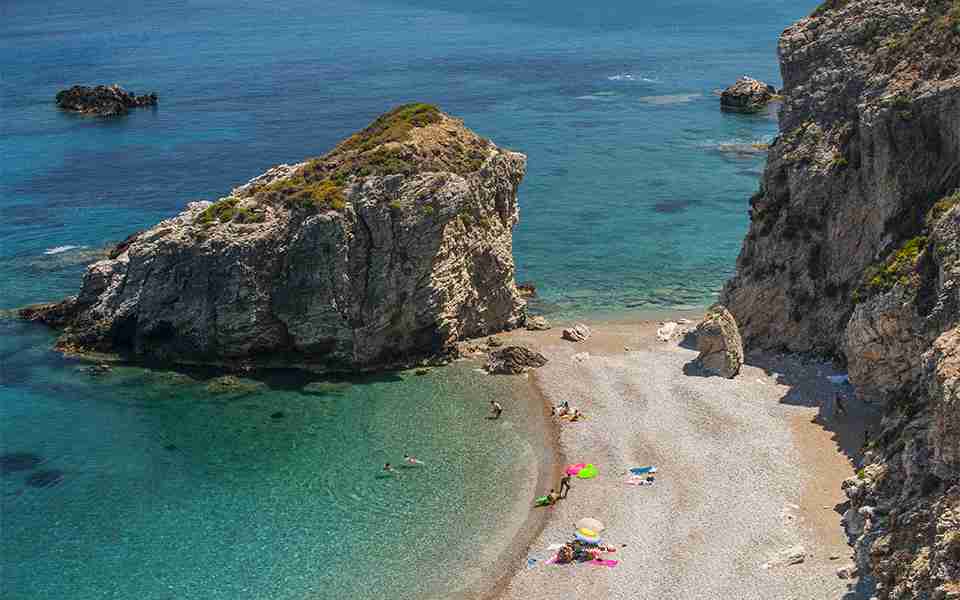My favorite photograph of Kythira was taken from the opening of my tent, capturing the scene outside: soil and tree trunks, with nothing but wild nature in the background. You might think that it was taken deep in a forest somewhere, but it was in the campsite at Kapsali, just above the touristy beach.
There is no trickery in the shot, because Kythira is actually like this: an unspoiled location where development has been sparse and where even organized camping feels like an encounter with nature. It’s not an exotic paradise, to use one of the clichés you hear about Greek islands, but a natural environment that resembles that of the Peloponnese, albeit in a more primitive state.

© Clairy Moustafellou
It has amazing beaches, each so beautiful you wonder how they could all be on the same island. You’ll be told about Kaladi, a popular pebbled beach famed for the big rock that splits it into two coves, or Melidoni, a dreamy sheltered cove. Both are great, but get so busy at the height of summer, you miss out on the tranquility that is the real essence of Kythira. Quieter beaches include Sparagario (you get there by pedal boat from Kapsali and share it with those who’ve set up tents there) or Kalami. You may have to psyche yourself into a Lara Croft state of mind for this one, as it involves a trek past a wasp’s nest and a descent by rope.
What else is Kythira, apart from its beaches? It is a collection of one-of-akind locations like the Green Lake, a natural pool shaped like a heart that tends to attract romantic hiking couples; it’s the Fonissa Waterfall in Mylopotamos, expected to have quite a bit of water this summer after a wet winter; it’s the Cave of Aghia Sofia with its 13th-century wall paintings; and it’s the forest at Gerakari, a great place for a picnic.

© Clairy Moustafellou
Kythira is the new via ferrata-style hiking trail running below Paliochora and combining trekking, canyoning and climbing. It is also Hytra, a rock in the middle of the sea that’s a habitat for the small yellow sempervivum flower and has a cool cave you can explore on a boat ride.
If you want to take a piece of Kythira back home with you, to get a bit of the aromas and tastes of this incredible island even when you’re far away, pay a visit to the Potamos market some Sunday morning. You’ll find fresh fruit, eggs, cheese, honey and soaps made with fragrant plants and herbs, all presented with love by the locals, many of whom, you might notice, speak with a slightly Scottish, Dutch or French intonation.
This is Kythira: a very special place, and a destination you will always want to come back to.











